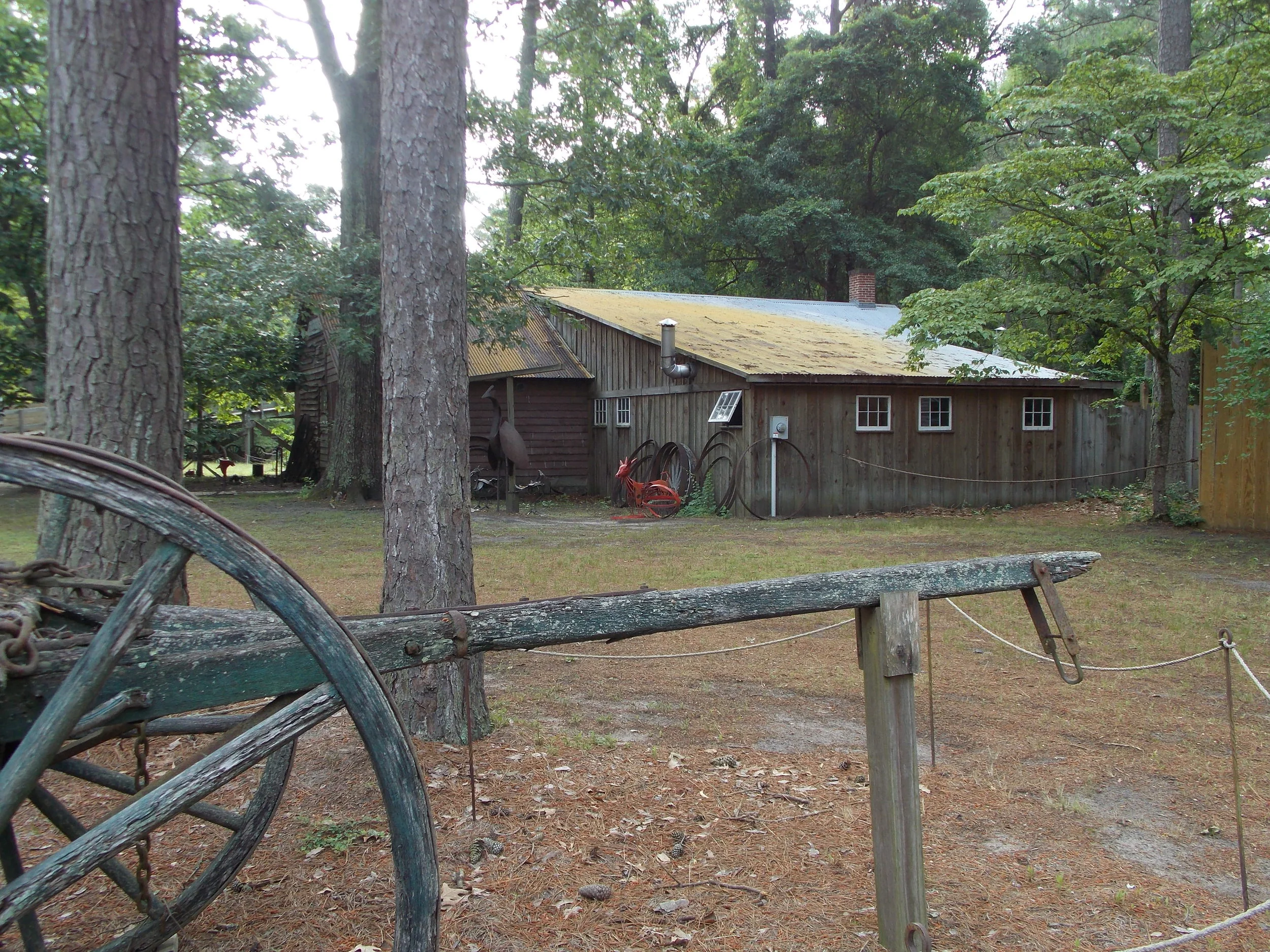Our Story
Nassawango Iron Furnace
From 1828-1850 the Nassawango Iron Furnace was in its heyday. Many workers – miners, sawyers, colliers, molders, draymen, and bargemen – labored to make iron. They gathered bog ore from Nassawango swamp, brought clam and oyster shells up the canal via the Pocomoke River from the Chesapeake Bay, and made charcoal in the Pocomoke Forest.
These raw materials were loaded into the Iron Furnace from the top, heated to 3,000 degrees, and the two resulting liquids were drawn off at the bottom of the furnace. Slag was cooled and tossed into the swamp. Iron was poured into molds and loaded onto barges which were towed down the canal by mule to waiting ships for transport to Baltimore, Philadelphia, and New York.
Maryland Iron Company
Furnace Town (also called Nescongo or Nasseongo) was a company town, built by the Maryland Iron Company. About 300 people lived and worked here. Families tended gardens, hunted for sustenance, kept house, cooked, and cleaned. Children did chores, went to school (sometimes), and played. Contemporary reports paint a picture of small neat yards and flowers in bloom, amidst the noisy industry. There were blacksmiths, broom makers, wainwrights, wheelwrights, bakers, cobblers, coopers, and weavers among the skilled workers.
By 1850 bankruptcy was declared. The sale advertisement listed 7,000 acres embracing immense beds of iron ore. Included in the offering were the Furnace, the Grist Mill and Saw Mill, the Iron Master’s Mansion, houses, store, barns, buildings, tools, 21,000 bushels of charcoal, and 1,650 tons of ore.
Following the insolvency, all of the residents, previously employed in the service of the Furnace moved away to seek employment. A few families stayed on to run a boarding house and the Grist Mill. By 1929, only the foundations of the buildings and the Furnace remained. All of the wooded structures had rotted away, and the Forest reclaimed the previously bustling worksite.
Restoration work began under the guidance of the Worcester County Historical Society in the 1960’s. In 1982, Furnace Town Foundation Inc. was formed to own, operate, and interpret the museum historic site.

